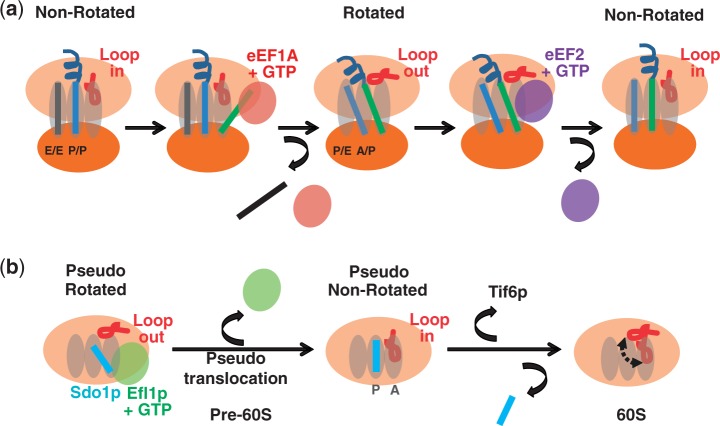Figure 7.
Involvement of the rpL10 loop in ribosome rotation throughout the ribosomal life cycle. (a) The elongation cycle of translation: rpL10 loop positioning and ligand binding. The elongation cycle begins at left with the ribosome in the non-rotated state where the E-site contains a deacylated tRNA, the P-site is occupied by peptidyl tRNA, and the un-occupied A-site can be sampled by the rpL10 loop, i.e. the ‘flipped in’ conformation. Following elongation ternary complex binding, aa-tRNA accommodation and peptidyltransfer, tRNAs assume the hybrid states and the loop assumes the ‘flipped out’ conformation, signaling the ribosome to assume the rotated state. eEF2 binds to rotated ribosomes, resulting in translocation, and the elongation cycle begins anew. (b) The ‘test drive’. Sdo1p and Efl1p interact with the pre-60S subunit in the pseudo-rotated state. Efl1p-mediated pseudo-translocation drives Sdo1p into the P-site, stabilizing the pseudo-non-rotated state with the rpL10 loop in the ‘flipped in’ conformation. This is followed by release of the anti-association factor Tif6p and Sdo1p, promoting the final steps of 60S maturation.

